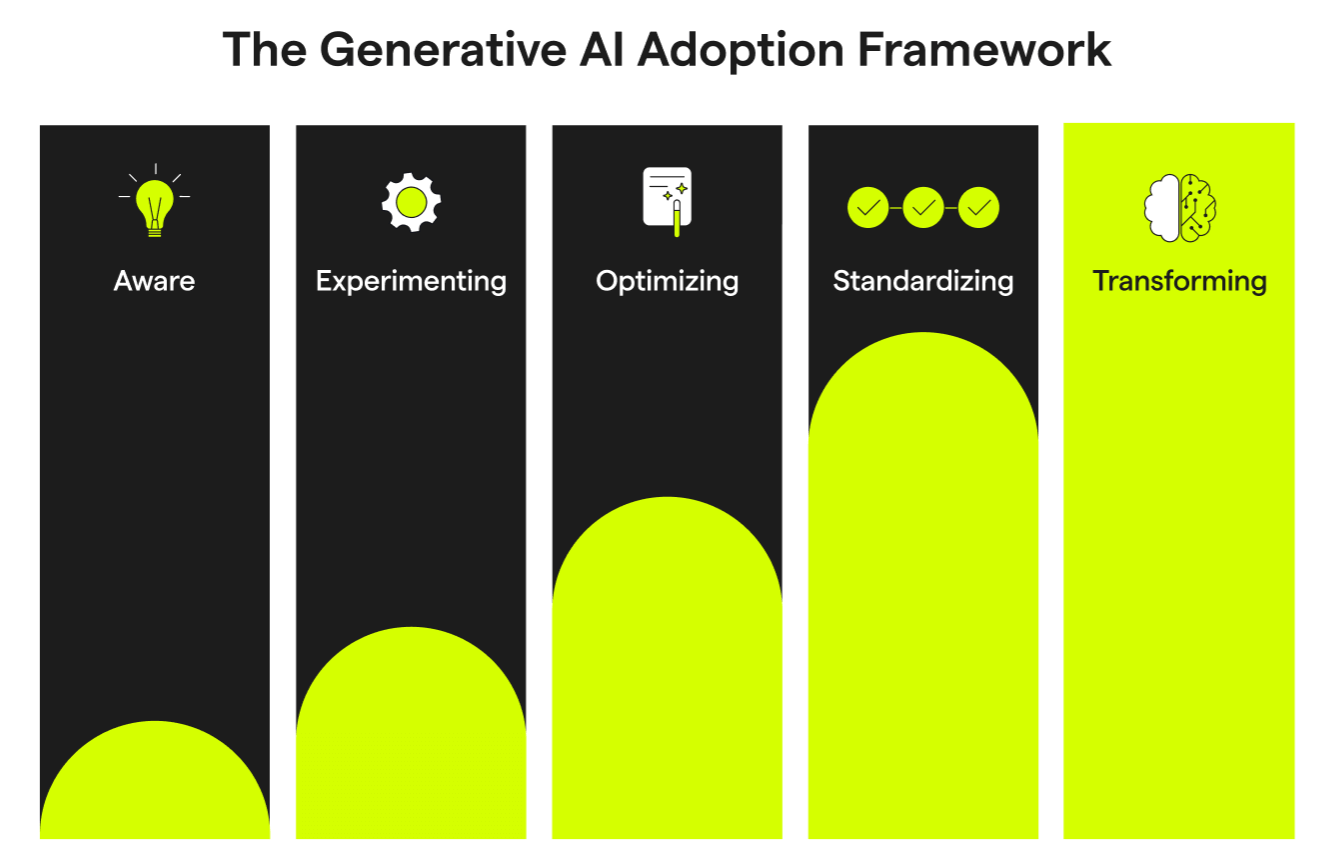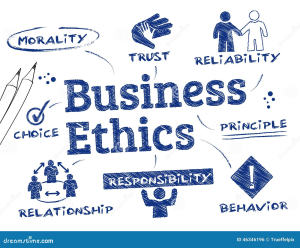Generative AI adoption is transforming the landscape of technology, with its rapid integration into everyday tasks at work and home. Since the debut of platforms like ChatGPT, nearly 40% of U.S. adults have ventured into the world of generative AI usage, showcasing a trend that has outpaced the early adoption rates of both personal computers and the internet. As AI technology trends rise, the implications are significant, particularly in the workplace where a substantial portion of employees leverage generative AI for various tasks. This swift uptake highlights the technology’s potential impact on productivity and creativity, reflecting broader shifts in technology adoption rates across different demographics. In an era where AI in the workplace is becoming commonplace, understanding these trends is vital for businesses aiming to stay competitive.
The swift embrace of creative artificial intelligence marks a revolutionary moment in technological progress. With advancements in machine learning and content generation, this new class of tools enables users to produce high-quality outputs effortlessly. Notably, as more individuals incorporate these innovative solutions into their routines, the effect of artificial intelligence on daily operations becomes increasingly evident. Observing how various sectors respond to this phenomenon is crucial, as different user groups adopt AI capabilities at varying rates. As industries navigate these changes, the integration of such technologies could redefine workflows and enhance overall efficiency.
The Rapid Adoption of Generative AI
Generative AI, introduced to the public through platforms like ChatGPT, has seen an astonishing uptake among Americans, outperforming the historical adoption rates of personal computers and the internet. As of August this year, approximately 40% of U.S. adults aged 18 to 64 reported using generative AI for various tasks. This staggering statistic highlights how quickly individuals are integrating this technology into their daily lives, both at work and home. Economists attribute this swift adoption to the foundational technologies that precede generative AI, which have established a digital culture that embraces innovation.
This rapid embrace offers a glimpse into the future impact of generative AI on the economy. As industries begin to leverage AI technology for efficiency and innovation, it becomes clear that those who adopt early will reap significant rewards. We are witnessing a shift where generative AI tools are no longer viewed as gimmicks but rather as essential components of work processes, suggesting an upcoming bias toward technology adoption rates that will likely continue accelerating. This trajectory indicates that generative AI may emerge as a critical driver of economic productivity, creating a strong impact across various sectors.
Generative AI Usage Across Different Demographics
The demographic disparities in generative AI usage reveal significant insights that highlight how various groups interact with this emerging technology. Younger individuals and those with higher levels of education are more inclined to use generative AI tools, a trend consistent with historical technology adoption patterns. Interestingly, unlike previous technological waves where gender dynamics played a more pronounced role, the current landscape shows that generative AI is broadly utilized across various occupations. However, it still finds more frequent users among those in white-collar jobs, showing a differentiation in how generative AI is incorporated into the workforce.
These usage gaps raise questions regarding access, education, and cultural adoption of technology. Unlike personal computers, which were heavily adopted by women in office roles during the 1980s, generative AI appears to appeal more to men and those in management and STEM careers today. This trend suggests that while tech accessibility is at an all-time high, variations in usage stem from individual willingness and confidence to explore new tools. As we analyze these differences, focusing on education and user-friendly resources to ensure equitable access to generative AI technology is essential for fostering broader acceptance and efficiency in diverse work environments.
Enhancing Workplace Efficiency with AI Technology
The integration of generative AI into the workplace is transforming conventional methods, leading to enhanced productivity and innovation. From drafting emails to conducting research, employees across various industries are beginning to incorporate generative AI into their workflows. This technology not only automates mundane tasks but also facilitates creative problem-solving, thus allowing employees to focus on more strategic endeavors. As companies catch on to these gains, the potential for generative AI to reshape workplace efficiency becomes increasingly evident.
However, it is critical for businesses to recognize that the informal use of generative AI by employees surpasses its formal incorporation into organizational practices. This informal utilization reflects the growing significance of AI technology trends and highlights an opportunity for businesses to harness this potential actively. By aligning their operations with generative AI capabilities, organizations can encourage a culture of innovation and adaptability while empowering employees to utilize these tools to their fullest potential.
Exploring Future Applications of Generative AI
The explosive growth of generative AI suggests a wealth of future applications spanning various industries. Experts project that over the next decade, companies that effectively harness generative AI technology will unlock significant value and pave the way for new business models. As advancements in AI continue to evolve, organizations must remain agile and proactive in exploring diverse applications beyond mere automation. From enhancing customer experiences to revolutionizing product design, the possibilities for generative AI’s impact are boundless.
It is essential for organizations to approach generative AI not just as an innovative product but as an integral input into their processes. Understanding how to leverage AI to augment human intelligence and decision-making will distinguish forward-thinking companies from their competitors. With the potential for groundbreaking developments, leaders within organizations should dedicate resources to research and implement AI technologies that align with their strategic objectives, enabling a competitive edge in a fast-evolving market.
Challenges of Generative AI Adoption
Despite the advantages of generative AI, businesses face numerous challenges in its adoption and integration. One major hurdle is the uncertainty surrounding the technology’s capabilities and limitations, which can lead to hesitance in pursuing AI-driven solutions. Companies may be concerned about the quality of content generated by AI and how it aligns with their brand identity and messaging. Furthermore, the lack of clearly defined use cases for generative AI raises questions about its return on investment, with organizations hesitant to invest in technology that lacks a proven track record in their respective fields.
Moreover, the ethical implications of generative AI usage cannot be overlooked. Concerns regarding data privacy and potential biases in AI outputs highlight the need for transparent systems and regulations. Businesses must navigate these complexities carefully to foster trust and credibility. As organizations begin to develop AI frameworks that prioritize responsible use and equity, addressing these challenges will become crucial. Successfully overcoming these barriers will set the foundation for long-term generative AI adoption and innovation.
The Economic Impact of Generative AI
The economic implications of generative AI are profound, as its rapid adoption signals a change in how businesses approach operational efficiency and creativity. The potential for generative AI to streamline processes, enhance productivity, and foster innovation suggests it could be a significant contributor to overall economic growth. As organizations increasingly invest in AI technologies, we can anticipate shifts in workforce dynamics, with new roles emerging that require advanced skill sets aligned with AI integration.
Moreover, the widespread use of generative AI across industries underscores its role in shaping the future of labor markets. As more professionals leverage AI tools, the demand for traditional skills may evolve, prompting a reassessment of educational approaches and workforce training programs. This shift offers an opportunity for entrepreneurs to explore AI-driven business models that enhance advancement across sectors. The economic impact of generative AI is likely to reshape industries and redefine the competitive landscape in unique ways.
Generative AI and Technology Adoption Rates
Understanding technology adoption rates is crucial for predicting the future landscape of generative AI. With nearly 40% of Americans adapting to this novel technology within such a short time, researchers are keen to draw comparisons with the earlier waves of technological advancements. This captivating trend highlights how generative AI follows a path distinct from its predecessors, indicating a transformative change in consumer behavior and expectations regarding technology.
Predicting the trajectory of generative AI adoption offers insights into potential market disruptions and opportunities. The rapid uptake suggests a readiness among the public for embracing advanced AI technologies, paving the way for more robust and innovative applications. As leaders and decision-makers examine the implications of these technology trends, aligning their strategies with these adoption metrics will be essential to maximizing the advantages offered by generative AI.
Generative AI Across Industries
Generative AI is witnessing adoption across a variety of industries, each exploring unique applications that enhance their operational efficiencies. From finance to healthcare and marketing, organizations are utilizing AI technology to gain insights, optimize workflows, and create more engaging customer experiences. For instance, in finance, AI is being used to analyze market trends and predict investment opportunities, whereas in healthcare, it aids in diagnosing diseases based on patient data. This level of versatility demonstrates generative AI’s potential to revolutionize industry standards.
Moreover, industries are starting to recognize that generative AI can act as a partner rather than just a tool. By integrating AI into their processes, organizations can enhance human capabilities, paving the way for more innovative solutions that were previously unimaginable. As industries evolve to harness these technologies, understanding their specific needs and how generative AI fits into their existing frameworks will be key to unlocking its full potential in driving future successes.
Implications for Business Leaders and Decision-Makers
For business leaders, the rapid acceptance of generative AI presents a critical opportunity to re-evaluate their operational strategies. As the technology continues to evolve, organizations that promptly embrace generative AI stand to gain a competitive edge, increasing their ability to adapt to market changes and consumer demands. Decision-makers must assess not only how to adopt these technologies effectively but also how to cultivate an environment that encourages innovation and risk-taking among employees.
Furthermore, understanding the implications of generative AI adoption is vital to shaping the future direction of businesses in countless sectors. From enhancing customer interactions to streamlining production processes, the collaborative potential between human judgment and generative AI could redefine success metrics in the corporate world. Leaders who proactively integrate AI while focusing on ethics, accountability, and sustainability will position themselves at the forefront of the ongoing technological revolution.
Frequently Asked Questions
What is the current state of generative AI adoption among American workers?
As of August 2024, nearly 40% of U.S. adults aged 18-64 have utilized generative AI tools, reflecting a rapid adoption rate that surpasses both internet and personal computer usage at similar early stages.
How does generative AI usage differ between the workplace and personal environments?
About 28% of employed adults use generative AI at work, while nearly 33% use it in personal settings. This shows a significant engagement with generative AI in both domains.
What are some key tasks where generative AI is utilized in the workplace?
Generative AI is primarily used in tasks such as writing emails, researching information, and consulting documentation. Its versatility allows it to assist in various professional applications.
What factors contribute to the quick adoption of generative AI technology?
The swift adoption of generative AI can be attributed to its foundation on previous technologies like personal computers and the internet, which created a conducive environment for new innovations.
Are there demographic differences in generative AI usage at work?
Yes, generative AI adoption varies across demographics, with higher usage rates observed among younger individuals, those with higher education levels, and men, particularly in STEM and management roles.
What implications do the findings about generative AI adoption have for businesses?
Businesses should take these findings seriously, as addressing generative AI technology can provide competitive advantages. Those who leverage generative AI efficiently may experience significant rewards in the marketplace.
What are the expected trends in generative AI technology adoption in the next few years?
In the coming years, significant innovation driven by generative AI is anticipated, identifying new applications and integrations that enhance productivity and efficiency across varying industries.
How does generative AI compare to previous technological advancements in terms of adoption speed?
Generative AI has been adopted more rapidly than the internet and personal computers, with faster initial engagement indicating its potential for large-scale economic impact.
What role do innovation and experimentation play in generative AI usage at work?
Innovation and experimentation are crucial in generative AI utilization; while many employees informally use AI technology, companies are gradually recognizing its potential and encouraging exploration.
How can businesses prepare for the ongoing integration of generative AI in the workplace?
Companies should focus on understanding and harnessing generative AI as a valuable tool for enhancing productivity, rather than treating it as a final product, to maximize its potential benefits.
| Key Points | Details |
|---|---|
| Generative AI Adoption Rates | 40% of U.S. adults aged 18-64 have used generative AI. |
| Comparison with Other Technologies | Generative AI adoption is faster than the internet (20% after 2 years) and PCs (20% after 3 years). |
| Public Survey Insights | Conducted a national survey parallel to historic CPS questions on PC and internet usage to gauge generative AI adoption. |
| Demographic Trends | Usage is higher among men, younger individuals, and those with higher education, particularly in white-collar jobs. |
| Informal Adoption | Many use generative AI informally for various tasks, even without formal integration in workplaces. |
| Future Implications for Businesses | Companies that can leverage generative AI effectively stand to benefit significantly in the coming years. |
Summary
Generative AI adoption has rapidly gained traction among the American workforce, reflecting a significant shift in how technology is integrated into everyday tasks. As nearly 40% of U.S. adults have engaged with generative AI tools, businesses and tech executives should closely monitor these trends. Understanding the dynamics of generative AI usage can unlock immense opportunities for innovation and economic growth, reinforcing its potential as a foundational layer in the digital landscape.




